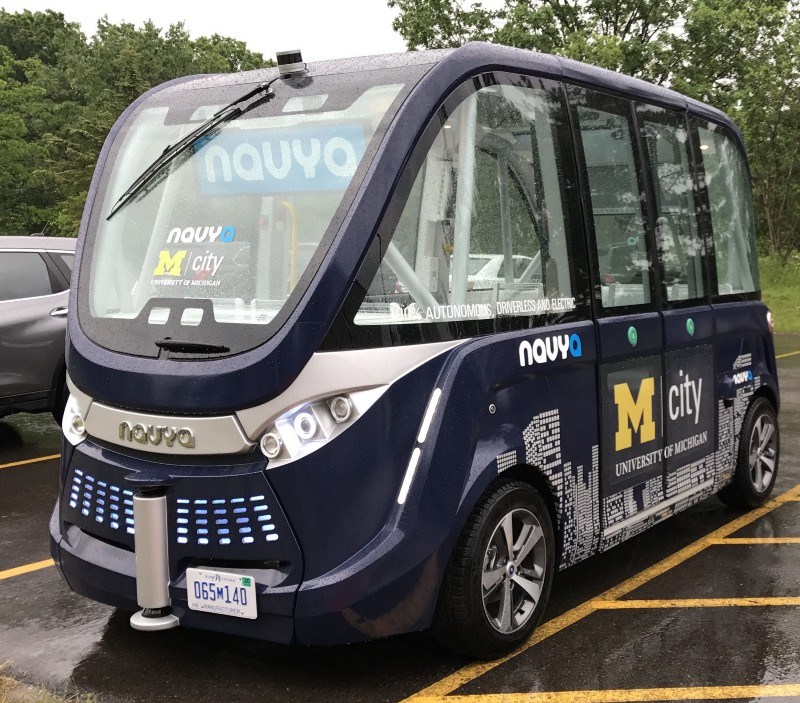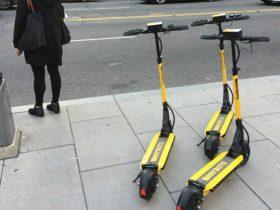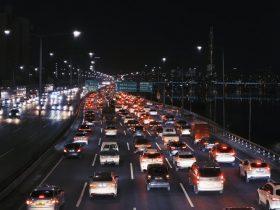(Nelson\Nygaard photo)
Hundreds of people from the automobile and technology industries are gathering at the Automated Vehicles Symposium in San Francisco this week to exchange notes and speculate about the ways autonomous vehicles might change our lives. If this year’s symposium is like others, few of the attendees will be from city agencies like transportation and planning departments.
That’s a shame.
As I contemplate the exciting (or frightening, depending on your perspective) future of transportation, I wish desperately to engage on the topic with the people who actually shape how we build and get around in cities.
Without input from city staff, we risk a replay of the mistakes made in changing our cities for the automobile age. In adapting to an autonomous future, we must not sideline people, the public realm, and the built environment in favor of the needs of one transportation mode as we did a century ago.
City staff bring a different lens to this issue than most of the engineers and designers at the center of the autonomous vehicle revolution. They bring a perspective grounded in their missions as public servants and in the technical issues they deal with on a day-to-day basis:
Street safety: Departments of transportation are principally responsible for designing streets that protect the most vulnerable users — pedestrians and cyclists — while ensuring that they function adequately for all other modes. What they know about the evolving practice of doing this effectively, as encapsulated in the NACTO Urban Street Design Guide and other progressive guidelines, can add a great deal to the discussion of what the algorithms determining AV behavior should consider. City staff should also consider how AVs might help conserve street space in city and neighborhood centers, where creating ample space for human connections is most important.
Livability and vibrancy: Planning departments are responsible for helping cities prepare for future growth and for creating an interesting, comfortable public realm through zoning and long-range planning.
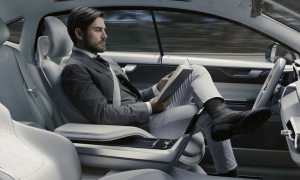
Critically, the parking requirements they incorporate in zoning codes are one of most important determinants of which buildings get built, how they get built, and the transportation choices of those who inhabit them.
In zoning for cars over the last century, planning departments have led their cities to vastly overbuilt parking, with the most damaging effects on town centers and commercial strips that feed off proximity and human activity.
How we evolve zoning codes and parking requirements for the autonomous age can either help correct for a century of excesses or perpetuate our already car-clogged society.
Equity: City staff will want to know if travel by autonomous vehicle will be cheap enough to benefit the most economically vulnerable members of our society.
The extent to which cities provide ladders of opportunity to low-income residents is an important marker of their quality as places, and transportation is an important factor in determining how easy it is to get to the jobs, educational institutions, and social service agencies that provide those ladders.
If AVs are adopted in the same way cars were — as private, rather than shared, mobility resources — those without the means to purchase what will likely be an expensive technology will be effectively relegated to a more limited set of travel options, similar to what happens in many cities today.
If AVs are adopted as part of shared fleets, with transit systems at the center, they might be more accessible to all.
The Role of City Staff
So who will determine how AVs are adopted? Right now, federal and state governments have been focused on the technology and how it might be operated. Ultimately, state and federal policy makers have great power to determine the trajectory of the technology (if they are willing to use that power), but cities alone will help determine how local streets and the built environment will evolve to make way for AV travel.
There are four areas that will make a big difference, and they are all within the control of city staff: Curb space, parking, pricing, and pilots.
Curb space: Adjust approaches to street design and managing curb space
If autonomous vehicles are adopted as shared mobility resources, rather than private ones, they could vastly increase the movement of people in individual travel lanes, which could in turn greatly diminish a major impediment to handing right-of-way space to transit vehicles, cyclists, and pedestrians in suburban cities today: opposition from an auto-oriented public. The management of curbside space will need special consideration. The bike-and-pedestrian-safety challenges posed by ride-hailing pick-up and drop-off activity offer a warning of what could happen in a shared autonomous future in which people’s main interface with the built environment is at the curb, rather than in parking lots.
City staff should:
-
Shift right-of-way space toward wider sidewalks, transit lanes, and bicycle facilities to both anticipate and encourage higher-occupancy vehicle travel in congested areas.
-
Begin allocating more curb space to passenger loading, and in areas with bike lanes or transit service, adjust the design of loading zones to reduce conflicts with other modes.
Parking: Adjust parking regulations and management of vehicle storage
Shared autonomous vehicles offer the potential to substantially reduce the need for parking.
Some early analyses estimate that parking demand could drop by as much as 80 or 90 percent if the entire small-vehicle fleet is shared.
Even if some of the fleet is privately owned, self-driving and self-parking cars could more efficiently use parking spaces.
The ways cities regulate the parking supply will need to shift to account for AVs. Recent research has shown that providing ample parking actively incentivizes driving, and in turn leads to more parking demand, while providing less parking shifts the incentive structure toward other modes, leading to less parking demand.
City staff should:
-
Eliminate parking minimums and replace them with parking maximums, to avoid over-providing parking in an era in which parking demand could drop dramatically.
-
Begin considering long-term plans for public off-street parking supplies that evolve the use of these buildings or land and ensure these city assets are still economically productive in an era of reduced parking demand.
-
To bridge the gap between today’s auto-oriented travel behavior and a multimodal future, implement a transportation demand management (TDM) ordinance along the lines of the one San Francisco recently put in place to provide incentives to shift toward space-efficient travel modes today.
Pricing: Provide financial incentives to encourage shared travel behavior
Parking pricing is one strategy many cities use to influence traveler behavior in their most congested areas. Tolls and congestion pricing are other ways of creating incentives for the use of shared modes.
Using a combination of roadway and curbside pricing could also help to encourage the use of shared AVs in places where demand for curb space might be most intense, such as transit hubs.
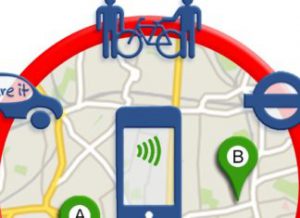
Figuring out how to charge more for inefficient uses of this limited curb space — i.e. private cars picking up or dropping off a single passenger — may be quite important in these types of environments.
City staff should:
-
Consider tolling in key corridors and congestion pricing in high-traffic areas.
-
Price parking in the areas where demand is highest and/or where it makes more sense based on city goals to use limited space for active uses rather than parking.
Pilots: Support the development of high-occupancy AV technology through pilots
Transit agencies can help spur the development of autonomous buses and shuttles by partnering with autonomous shuttle companies on pilots of the technology (examples of this are already happening). Such pilots might be most prudent in less complex operating environments (i.e. outside dense downtowns) and on routes or portions of routes that are hard to serve using traditional buses (i.e. where low ridership makes it inefficient to use full-size buses or provide frequencies that make transit attractive). They can help the companies developing the technology to ensure that the vehicles operate safely for both those onboard and those outside and to provision their vehicles with appropriate passenger accommodations. Ultimately, in the densest parts of cities, high occupancy vehicles will continue to hold a distinct advantage over small vehicles because of geometry — the sheer number of people who want to be in space-constrained downtowns everyday make it necessary to get them there on modes that are as space-efficient as possible.
Cities should:
-
Partner with companies developing high-occupancy autonomous vehicles to pilot the technology in the places where doing so is prudent.
At the conference this week and at others to come, a few colleagues and I will be starting the conversation: How do we want our cities to evolve, and how can the future of transportation support this vision? Cities have a great deal of power to determine whether we maximize the best aspects of the coming autonomous vehicle revolution or instead let shiny new mobility technologies run roughshod over the aspects of urban life we treasure most. My hope is that city staff and visionaries come together to create a future we can all enjoy.
Joshua Karlin-Resnick is a senior associate at Nelson\Nygaard who specializes in parking, transportation demand management, and the implications of autonomous vehicles for transportation planning.









